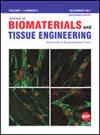Role of Magnesium in Tumor Microenvironment and Underlying Molecular Mechanisms
IF 0.1
4区 医学
引用次数: 0
Abstract
Magnesium (Mg) based biomaterials have gained increased attention in various health care applications, as orthopedic transplants in particular. It is also reported that they also have anti-tumor properties. Mg based alloy materials can actively interfere with the growth of tumor cells, which may be its degradation products, including OH− and H2. During the degradation of Mg, ions and hydrogen (H2) are continuously increasing and pH value and osmotic pressure in the microenvironment of the material surface are increased at the same time. Such near-surface effects can also have a dramatic impact on residual tumor cells, interfere with the cycle of tumor cells as well as reduce the content of reactive oxygen species. Therefore, the intake level of Mg based alloys and Mg content will affect the growth activity of many tumor cells. Keeping these points in view, this article reviews the role of Mg in tumor microenvironment and underlying molecular mechanisms, in particular it’s degradation behavior.镁在肿瘤微环境中的作用及其分子机制
镁(Mg)基生物材料在各种医疗保健应用中获得了越来越多的关注,特别是作为骨科移植。据报道,它们还具有抗肿瘤特性。Mg基合金材料能够积极地干扰肿瘤细胞的生长,这可能是其降解产物,包括OH−和H2。在Mg降解过程中,离子和氢气(H2)不断增加,材料表面微环境的pH值和渗透压同时升高。这种近表面效应还会对残留肿瘤细胞产生巨大的影响,干扰肿瘤细胞的循环,降低活性氧的含量。因此,镁基合金的摄入水平和镁含量会影响许多肿瘤细胞的生长活性。鉴于此,本文综述了Mg在肿瘤微环境中的作用及其分子机制,特别是其降解行为。
本文章由计算机程序翻译,如有差异,请以英文原文为准。
求助全文
约1分钟内获得全文
求助全文
来源期刊

Journal of Biomaterials and Tissue Engineering
CELL & TISSUE ENGINEERING-
自引率
0.00%
发文量
332
审稿时长
>12 weeks
 求助内容:
求助内容: 应助结果提醒方式:
应助结果提醒方式:


